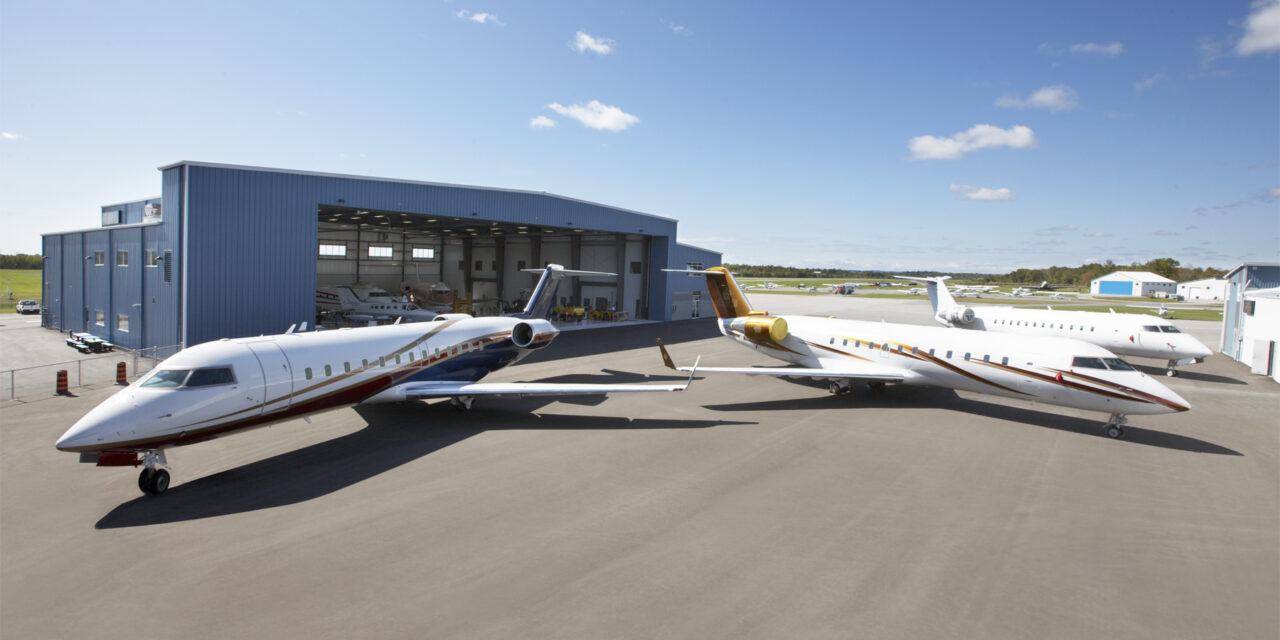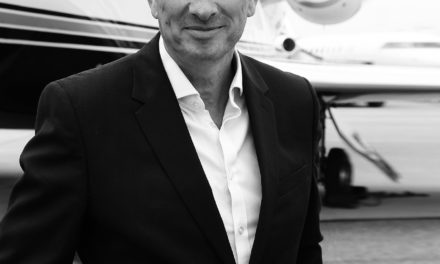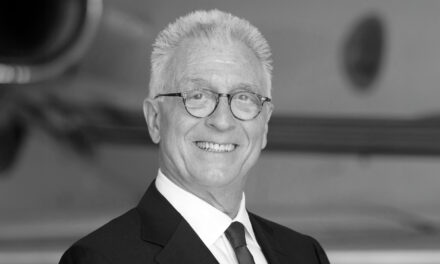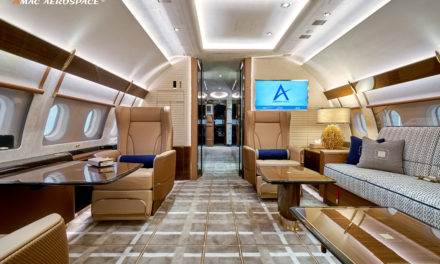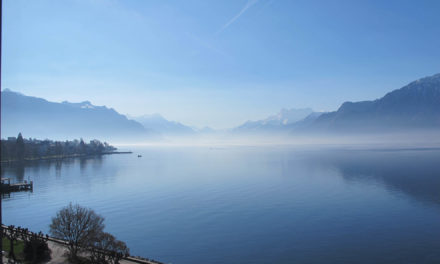By Caroline Phaneuf – © Flying Colours & AIRHAWKE
Savvy buyers looking to invest in a VIP or corporate shuttle aircraft are increasingly considering converting a well-priced former regional airliner and customizing it to fit their exact wants and mission needs. The inventory of pre-owned business jets is steadily returning to pre-pandemic norms, but an unexpected legacy of the commercial network reduction is the resurgence of interest in converting regional aircraft to customized business aircraft.
An attractive option
Converting a regional jet can be an attractive option. «What’s particularly attractive about the conversion concept is that the owner is able to fully customize the interior – and exterior – of the aircraft, and yet the total cost will likely be far less than buying new,» says Eric Gillespie, Vice President, Operations, at Flying Colours, a leading Maintenance, Repair and Overhaul (MRO) company recently acquired by Flexjet. «For a fraction of the price, an owner will have access to an ‘as new’ airframe that emulates the size of a large cabin long-range jet in a much shorter timeframe.»
The conversion process can take a few months, instead of the wait time for new, which is often a few years. The secret to ensuring the added value is to work with a carefully selected MRO, and experienced design engineers, interior designers and project managers.
«With a conversion, the aircraft is stripped down to its frame and everything is rebuilt inside, meaning owners have carte-blanche – depending on their budget, of course,» says David Vanderzwaag, CEO of AIRHAWKE, an international aircraft design and engineering firm which has worked on conversions for aircraft from several OEMs including Bombardier, Airbus, and Boeing. The Canada-based company is currently working on design engineering projects to convert an Embraer E140 and the first E190 conversion from regional to executive format. AIRHAWKE also supports design engineering for head-of-state widebody aircraft, special missions and medevac projects.
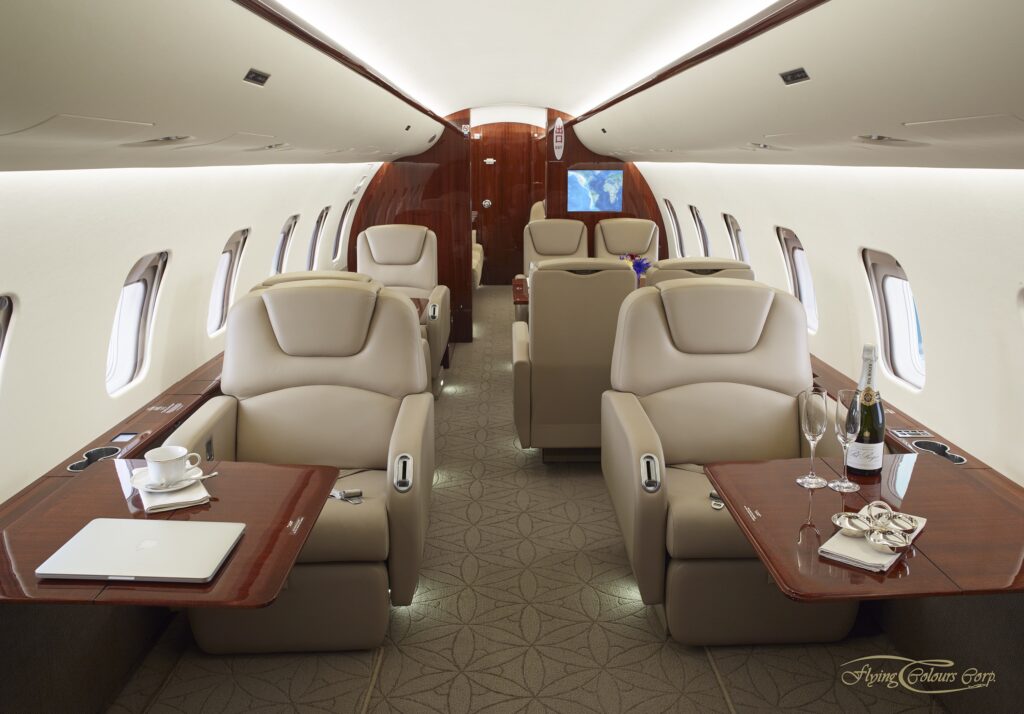
An infinite number of configurations
A conversion easily opens the door to an infinite number of configurations. Gillespie explains projects they’ve completed have resulted in VVIP cabins, hybrid models where VIP and medevac layout feature in the same cabin, and mixed cabins where a VIP configuration up front is complemented by a corporate shuttle layout in the aft cabin. «Once the cabin design is finalized, we’ll work with the MRO to ensure that the requests are achievable and can be certified. Our job is to make sure the vision of the owner can be realized while meeting industry standards. We welcome these challenges,» adds Vanderzwaag.
Once the layout is established, the engineering of the interior takes place, usually completely reconfiguring the electrical, water, waste and environmental control systems including humidification, the connectivity system (which will likely be chosen based on the use of the aircraft and where it flies), the entertainment systems, lighting, and more. «The most crucial part of the engineering of a conversion is at the outset, selecting seats, equipment and a layout that are certifiable. With that established, the rest of the modification can proceed without major risk,» explains Vanderzwaag.
Seats and divans can be shaped to measure, upholstered in the coverings of the owner’s choosing, whether embossed leather, wool blends or new sustainable materials. Monuments can be custom-built to incorporate high-end expresso machines or special fridges and finished in selected veneers.
«Overhauling any cabin is always a complex process requiring well-executed project management, technical skills, engineering know-how, and the ability to turn ideas into reality. Customers have all kinds of requests, many of them looking to emulate the luxury VIP interiors inside large cabin long-range business jets. All those requests require enormous amounts of expertise as one endeavours to realize the customer’s dream while ensuring the design is certifiable and can be done within budget,» he says.
Available airframes
With the pandemic causing a reduction in commercial airline networks, there are many airframes sitting in hangars. The airlines are keen to divest their assets rather than have them grounded, meaning buyers can potentially negotiate an attractive buying price. After having worked on dozens of conversions over the years, Gillespie advises that an owner needs to consider several factors when making a pre-owned purchase. «The main factor relates to the number of hours the aircraft has flown, the lower the engine time, the better. A good maintenance heritage is also important,» he explains.
Increased popularity
Recognizing the need left by a reduced air transport network, the option of converting a regional jet to business use has increased in popularity – and among new audiences. Not only have high net-worth individuals started to go this route, but charter operators, as well as investment banks and corporations, have turned to conversions, as the benefits, for many, outweigh the drawbacks. The potential offered by a revamped regional jet is undeniably appealing.

